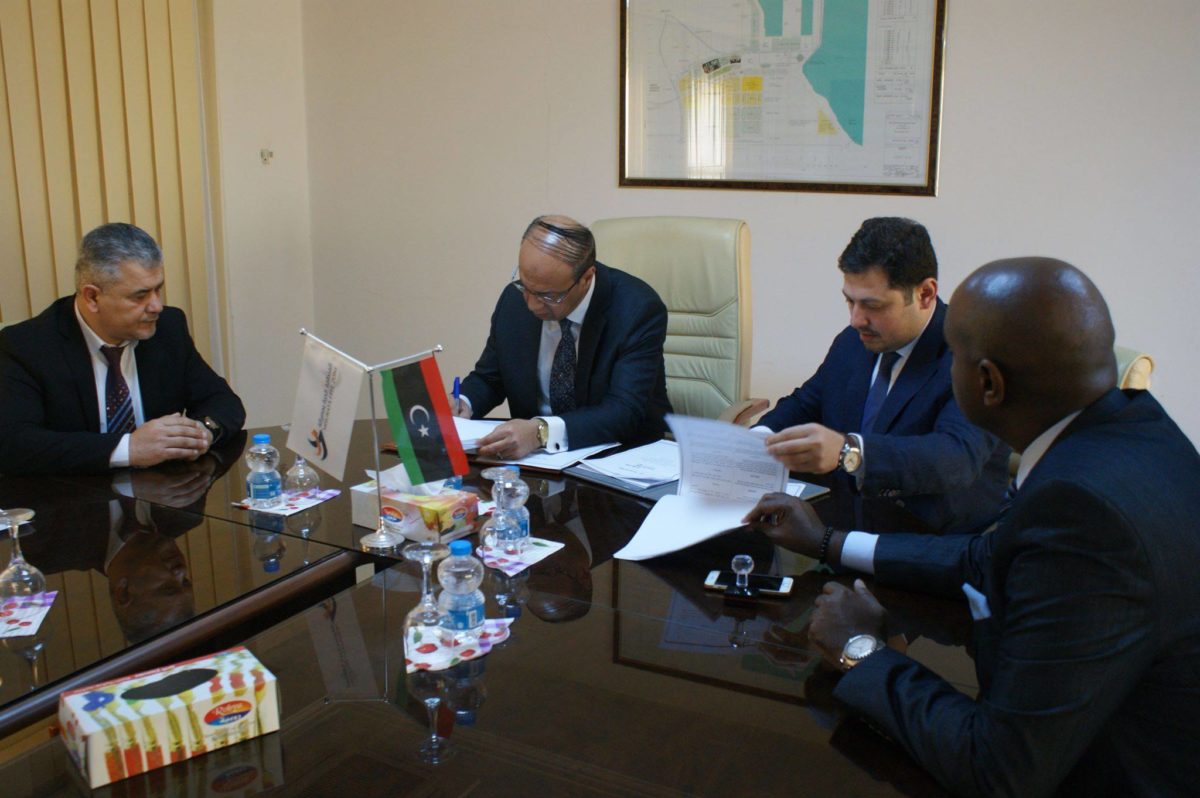iQ Power Inc. and the Libyan free-trade economic zone, Misurata Free Zone (MFZ) have signed a memorandum of understanding for the development of energy projects aimed at increasing MFZ’s energy independence through renewable energies.
The MFZ, according to a press release from iQ Power Inc., has expressed its interest in developing solar PV and CSP projects “based on the directives of the Libyan State.”
The U.S. company, which is now considering how CSP, PV or hybrid can best be utilized, said that a master plan to build a hybrid PV/CSP 300 MW project in the area, is currently under development.
This will bring “a minimum of 500 million USD in foreign direct investments (FDI) to the Libyan economy – a build-own-operate-transfer (BOOT) contract benefiting the people of Libya first and finally,” iQ Power said.
Furthermore, MFZ is considering the construction of a seawater desalination plant utilizing, in part or in whole, solar energy as its source of energy to meet the power needs of the city of Misurata.
“Currently, Libya is becoming a supply and export platform for solar PV modules and inverters to the Middle East and African countries which have a robust pipeline of upcoming PV and CSP projects,” iQ Power said in its statement.
Timid
The ongoing Libyan civil war, which began in 2014, has interrupted the timid efforts the oil-rich country was putting into developing solar energy.
Last March, a study released by the U.S. Department of Energy’s Berkeley Lab, titled “Strategic siting and regional grid interconnections key to low-carbon futures in African countries”, found that Libya, among other African countries, should receive high prioritization for solar energy projects, since it is home to a number of cost-effective sites.
Meanwhile, according to a recent study from Libya’s University of Zawia, the country currently has a power generation capacity of around 9 GW, comprising 16 gas and oil plants operated by local state-owned utility, GECOL.
“The location of Libya on the high centered radiation area as well as its long coastal line on the Mediterranean makes it one of the countries that have very high potential for solar and wind energy in addition to other renewable sources such as geothermal, biomass and tidal waves, however, at the moment all these sources have not yet utilized in proper and efficient ways,” the authors of the report stress.
According to the study, the Libyan government, in its strategic plan for renewables for the period 2013-2025, had set targets for 300 MW of PV by 2020 and450 MW by 2025; while for CSP, these two targets are 150 MW and 800 MW, respectively.
Libya has a daily average of solar radiation on a horizontal plane of around 7.1 kwh/m2/day, with a sun duration of more than 3,500 hours per year. As of September 2017, when the study was published, Libya had an installed solar capacity, coming exclusively from stand-alone systems, of just 1.5 MW.
This content is protected by copyright and may not be reused. If you want to cooperate with us and would like to reuse some of our content, please contact: editors@pv-magazine.com.




By submitting this form you agree to pv magazine using your data for the purposes of publishing your comment.
Your personal data will only be disclosed or otherwise transmitted to third parties for the purposes of spam filtering or if this is necessary for technical maintenance of the website. Any other transfer to third parties will not take place unless this is justified on the basis of applicable data protection regulations or if pv magazine is legally obliged to do so.
You may revoke this consent at any time with effect for the future, in which case your personal data will be deleted immediately. Otherwise, your data will be deleted if pv magazine has processed your request or the purpose of data storage is fulfilled.
Further information on data privacy can be found in our Data Protection Policy.